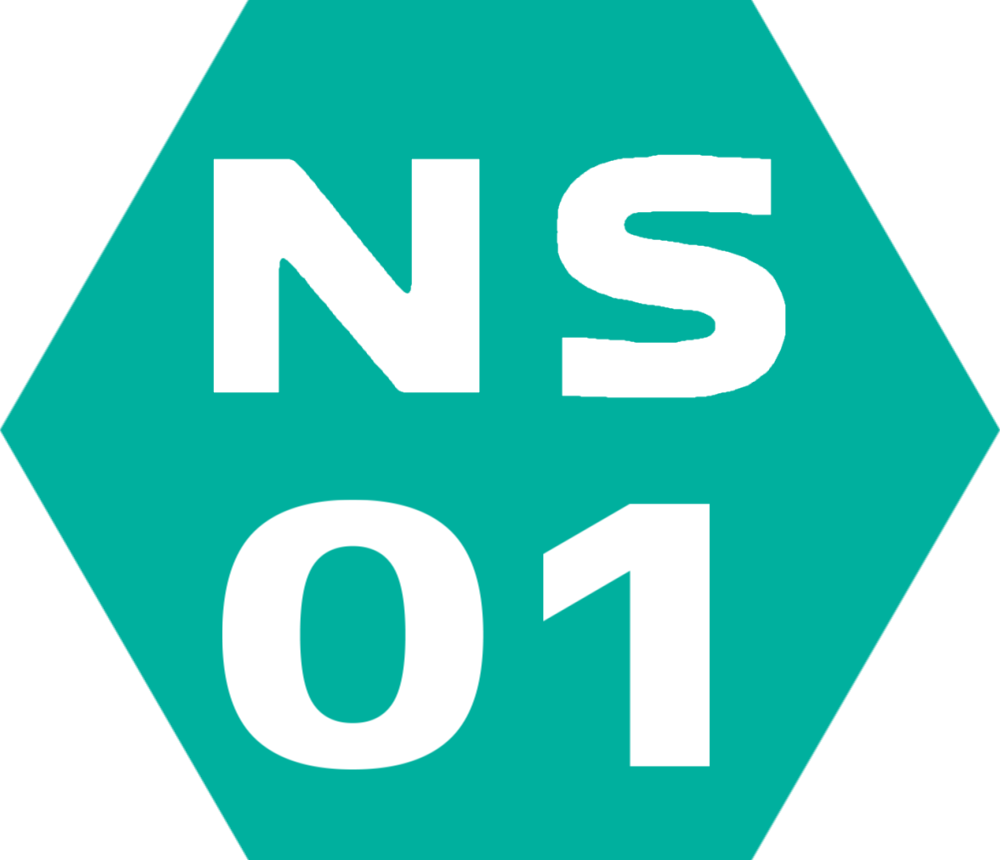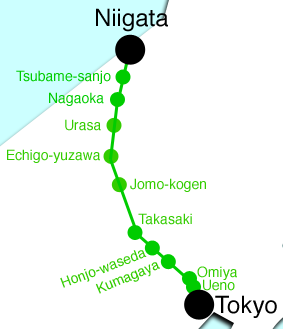|
Uchijuku Station
is a passenger railway station located in the town of Ina, Saitama, Japan, operated by the Saitama New Urban Transit Company. Lines Uchijuku Station is a terminal station the Saitama New Urban Transit New Shuttle Ina Line and is 12.7 km from opposing terminus of the line at . Station layout This elevated station consists of a single island platform serving two tracks, west of the Jōetsu Shinkansen tracks. Platforms History The station opened on 22 August 1990. Passenger statistics In fiscal 2017, the station was used by an average of 4,780 passengers daily (boarding passengers only). Surrounding area *Choseiseko Memorial Park *Kobarikita Elementary School See also *List of railway stations in Japan The links below contain all of the 8579 railway stations in Japan. External links {{Portal bar, Japan, Trains * Railway stations Japan Japan ( ja, 日本, or , and formally , ''Nihonkoku'') is an island country in East Asia. It ... References ... [...More Info...] [...Related Items...] OR: [Wikipedia] [Google] [Baidu] |
Saitama New Urban Transit Logomark
may refer to: Places * Saitama (city), the capital and the most populous city of Saitama Prefecture, Japan * Saitama Prefecture, a prefecture of Japan in the Kantō region ** Kita-Saitama District, Saitama ** Minami-Saitama District, Saitama Sports * Saitama SC, a football club * Saitama Seibu Lions, a baseball club * Saitama Ageo Medics, a volleyball club * Saitama Stadium, a football (soccer) stadium in Saitama, Saitama Prefecture, Japan * Saitama Stadium 2002, a football stadium in Midori-ku, Saitama City, Saitama Prefecture, Japan * Saitama Super Arena, an arena in Saitama, Saitama Prefecture, Japan Transportation * Saitama-Shintoshin Station, a railway station in Ōmiya-ku, Saitama, Saitama Prefecture, Japan * Saitama New Urban Transit, operator of the New Shuttle operated in the Greater Tokyo Area in Japan * Saitama Rapid Railway Line, a railway line Other * Television Saitama abbreviated TVS, doing business as is a Japanese fee-free terrestrial commercial te ... [...More Info...] [...Related Items...] OR: [Wikipedia] [Google] [Baidu] |
Island Platform
An island platform (also center platform, centre platform) is a station layout arrangement where a single platform is positioned between two tracks within a railway station, tram stop or transitway interchange. Island platforms are popular on twin-track routes due to pragmatic and cost reasons. They are also useful within larger stations where local and express services for the same direction of travel can be provided from opposite sides of the same platform thereby simplifying transfers between the two tracks. An alternative arrangement is to position side platforms on either side of the tracks. The historical use of island platforms depends greatly upon the location. In the United Kingdom the use of island platforms is relatively common when the railway line is in a cutting or raised on an embankment, as this makes it easier to provide access to the platform without walking across the tracks. Advantages and tradeoffs Island platforms are necessary for any station with many th ... [...More Info...] [...Related Items...] OR: [Wikipedia] [Google] [Baidu] |
Railway Station
Rail transport (also known as train transport) is a means of transport that transfers passengers and goods on wheeled vehicles running on rails, which are incorporated in tracks. In contrast to road transport, where the vehicles run on a prepared flat surface, rail vehicles (rolling stock) are directionally guided by the tracks on which they run. Tracks usually consist of steel rails, installed on sleepers (ties) set in ballast, on which the rolling stock, usually fitted with metal wheels, moves. Other variations are also possible, such as "slab track", in which the rails are fastened to a concrete foundation resting on a prepared subsurface. Rolling stock in a rail transport system generally encounters lower frictional resistance than rubber-tyred road vehicles, so passenger and freight cars (carriages and wagons) can be coupled into longer trains. The operation is carried out by a railway company, providing transport between train stations or freight customer facilit ... [...More Info...] [...Related Items...] OR: [Wikipedia] [Google] [Baidu] |
Ina, Saitama
is a town in Saitama Prefecture, Japan. , the town had an estimated population of 44,928 in 18,907 households and a population density of 3000 persons per km². The total area of the town is . Geography Located in central-east Saitama Prefecture, Ina is in the flatlands of the Kantō plains.The Ayase River runs along the eastern border, and the Haraichi Numa River runs along the western border. About 60% of the town area is located on the Omiya plateau, and the rest is the alluvial plain. The highest point in the town area is 19 meters above sea level. Surrounding municipalities Saitama Prefecture * Ageo * Okegawa * Hasuda Demographics Per Japanese census data, the population of Ina has increased rapidly since the 1970s. History During the early Edo period, Ina was home to the short-lived (1590-1619) Komuro Domain founded by Ina Tadatsugu. It was afterward ruled as ''hatamoto'' territory under the direct control of the Tokugawa shogunate. The villages of Komuro and Kobari ... [...More Info...] [...Related Items...] OR: [Wikipedia] [Google] [Baidu] |
New Shuttle
The is a manually driven rubber-tyred people mover system in Saitama Prefecture, Japan, operated by . The 12.7-kilometre that runs north from Ōmiya Station in Saitama, Saitama, alongside the Tohoku Shinkansen and Joetsu Shinkansen elevated high-speed lines through Ageo to Uchijuku Station in Ina in Saitama Prefecture in the Greater Tokyo Area is the only route that is run on the system. The line is double tracked from Ōmiya Station to Maruyama Station and single tracked from Maruyama to Uchijuku Station. Saitama New Urban Transit is a kabushiki gaisha whose major shareholders include the East Japan Railway Company, Tobu Railway, banks, Saitama prefectural government, and the cities and the town served. Ina Line stations The stations on the line are as follows. All stations are located in Saitama Prefecture. The line's depot is located next to Maruyama Station. Rolling stock , the following train types are used on the line, all formed as six-car sets. * 1050 series ... [...More Info...] [...Related Items...] OR: [Wikipedia] [Google] [Baidu] |
Jōetsu Shinkansen
The is a high-speed shinkansen railway line connecting Tokyo and Niigata, Japan, via the Tōhoku Shinkansen, operated by the East Japan Railway Company (JR East). Despite its name, the line does not pass through the city of Joetsu or the historical Jōetsu region, which instead are served by the Hokuriku Shinkansen. The name instead originates from the parallel Jōetsu Line, which in turn is named after the two provinces that it connects: Jōshū (an alternate name for Kōzuke Province which comprises today's Gunma Prefecture), and Echigo Province (modern day Niigata Prefecture). Train services * '' Toki'', Tokyo - Niigata (limited-stop) * '' Tanigawa'', Tokyo - Echigo-Yuzawa (all-stations, since October 1997) Discontinued services * ''Asahi'', Tokyo - Niigata (discontinued December 2002) * '' Max Asahi'', Tokyo - Niigata (discontinued December 2002) * '' Max Toki'', Tokyo - Niigata (discontinued October 2021) * '' Max Tanigawa'', Tokyo - Echigo-Yuzawa (discontinued October ... [...More Info...] [...Related Items...] OR: [Wikipedia] [Google] [Baidu] |
List Of Railway Stations In Japan ...
The links below contain all of the 8579 railway stations in Japan. External links {{Portal bar, Japan, Trains * Railway stations Japan Japan ( ja, 日本, or , and formally , ''Nihonkoku'') is an island country in East Asia. It is situated in the northwest Pacific Ocean, and is bordered on the west by the Sea of Japan, while extending from the Sea of Okhotsk in the north ... [...More Info...] [...Related Items...] OR: [Wikipedia] [Google] [Baidu] |
Railway Stations In Japan Opened In 1990
Rail transport (also known as train transport) is a means of transport that transfers passengers and goods on wheeled vehicles running on rails, which are incorporated in tracks. In contrast to road transport, where the vehicles run on a prepared flat surface, rail vehicles (rolling stock) are directionally guided by the tracks on which they run. Tracks usually consist of steel rails, installed on sleepers (ties) set in ballast, on which the rolling stock, usually fitted with metal wheels, moves. Other variations are also possible, such as "slab track", in which the rails are fastened to a concrete foundation resting on a prepared subsurface. Rolling stock in a rail transport system generally encounters lower frictional resistance than rubber-tyred road vehicles, so passenger and freight cars (carriages and wagons) can be coupled into longer trains. The operation is carried out by a railway company, providing transport between train stations or freight customer facilit ... [...More Info...] [...Related Items...] OR: [Wikipedia] [Google] [Baidu] |
Railway Stations In Saitama Prefecture
Rail transport (also known as train transport) is a means of transport that transfers passengers and goods on wheeled vehicles running on rails, which are incorporated in tracks. In contrast to road transport, where the vehicles run on a prepared flat surface, rail vehicles (rolling stock) are directionally guided by the tracks on which they run. Tracks usually consist of steel rails, installed on sleepers (ties) set in ballast, on which the rolling stock, usually fitted with metal wheels, moves. Other variations are also possible, such as "slab track", in which the rails are fastened to a concrete foundation resting on a prepared subsurface. Rolling stock in a rail transport system generally encounters lower frictional resistance than rubber-tyred road vehicles, so passenger and freight cars (carriages and wagons) can be coupled into longer trains. The operation is carried out by a railway company, providing transport between train stations or freight customer faciliti ... [...More Info...] [...Related Items...] OR: [Wikipedia] [Google] [Baidu] |





